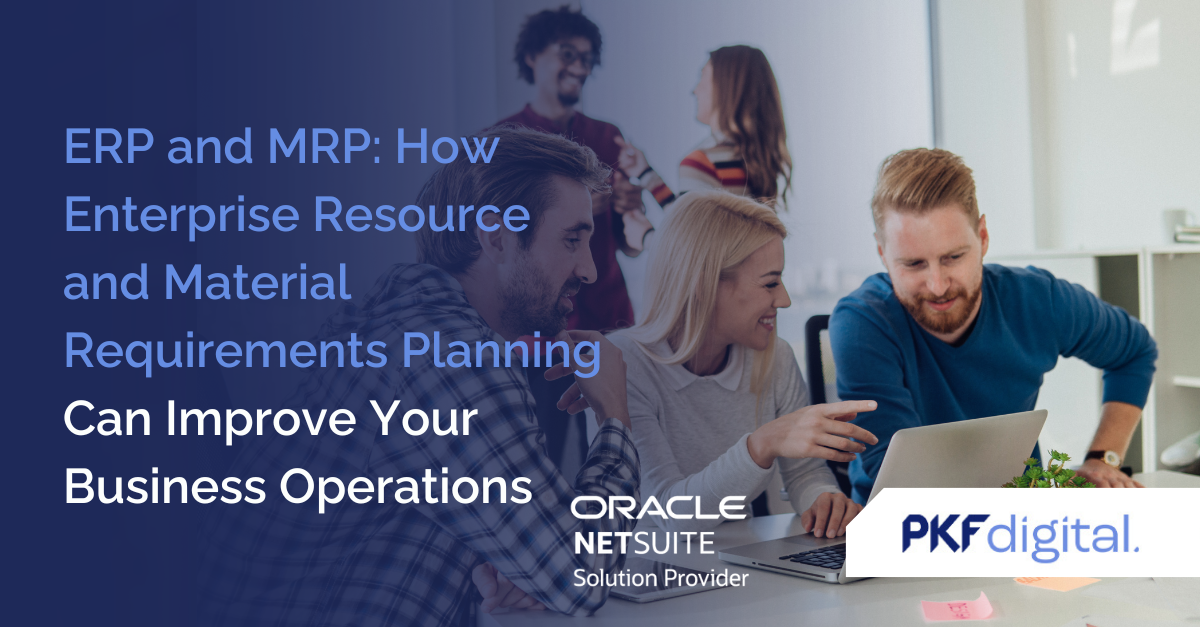Enterprise Resource Planning (ERP) and Material Requirements Planning (MRP) are powerful tools that can help businesses streamline their operations, increase efficiency, and reduce costs. In this article, we will explore what ERP and MRP are, how they relate to each other, and how they can benefit businesses. We will also discuss some of the challenges businesses face when implementing these systems and provide tips for selecting the right ERP and MRP systems for a business.
Understanding Enterprise Resource Planning (ERP)
ERP is a software system that helps businesses manage their core processes such as finance, human resources, and procurement. The main purpose of an ERP system is to provide a centralised view of a business's operations and automate key processes to improve efficiency. Some of the features of an ERP system include:
- Inventory management
- Accounting and finance management
- Customer relationship management
- Supply chain management
- Human resources management
By implementing an ERP system, businesses can reduce manual processes, increase productivity, and improve decision-making. For example, an ERP system can help a business optimise inventory levels, reduce order processing times, and improve customer satisfaction.
Why is Material Requirements Planning (MRP) Software Different?
MRP is a subset of an ERP system that specifically focuses on the management of a business's material requirements. The main purpose of an MRP system is to ensure that a business has the right materials at the right time to meet demand. Some of the features of an MRP system include:
- Material forecasting
- Inventory control
- Production scheduling
- Supplier management
By implementing an MRP system, businesses can reduce inventory costs, and improve delivery times. For example, an MRP system can help a business identify the optimal time to order materials, reducing the risk of stockouts or excess inventory.
The Benefits of ERP and MRP
By implementing ERP and MRP systems, businesses can benefit in a number of ways. For example:
- Improved efficiency: By automating key processes and providing a centralised view of operations, businesses can reduce manual processes and improve efficiency.
- Reduced costs: By optimising inventory levels, minimising stockouts, and reducing lead times, businesses can reduce costs and improve profitability.
- Better decision-making: By providing real-time data and analytics, businesses can make data-driven decisions that can improve business outcomes.
According to a study by Investopedia, businesses that implement ERP systems experience an average of 22% improvement in their inventory management processes, 20% improvement in order delivery, and 17% reduction in production costs.
Challenges of Implementing ERP and MRP
Implementing ERP and MRP systems can be a complex and challenging process. Some of the common challenges businesses face when implementing these systems include:
- Resistance to change: Employees may be resistant to new processes and systems, which can impede adoption and use.
- Data quality issues: ERP and MRP systems rely on accurate and up-to-date data, which can be a challenge for businesses that have poor data quality.
- Integration issues: Integrating ERP and MRP systems with existing systems can be difficult, which can lead to data inconsistencies and errors.
To overcome these challenges, businesses should focus on proper planning and execution. This includes identifying key stakeholders, setting clear goals, and providing adequate training and support for employees.
Choosing the Right ERP and MRP Systems
Selecting the right ERP and MRP systems for a business is a critical decision. Businesses need to choose systems that align with their specific needs and objectives. Here are some tips to help businesses make an informed decision:
- Evaluate the functionality of the system: Businesses should consider the functionality of the system and ensure that it meets their specific needs. Some systems may have features that are not relevant to the business, and others may lack essential features.
- Consider scalability and customisation: Businesses should choose systems that can grow with them. A system that is scalable and customisable will be able to meet the changing needs of the business.
- Research and compare different systems: Businesses should research and compare different ERP and MRP systems to find the best fit for their organisation. This will help them find a system that aligns with their specific needs and budget.
- Look for user-friendly systems: A user-friendly system is critical for employee adoption and success. Businesses should choose a system that is easy to navigate and understand.
- Consider the implementation process: The implementation process can be complex and time-consuming. Businesses should choose a system that offers support during the implementation process to ensure a successful rollout.
In Conclusion
ERP and MRP systems are powerful tools that can help businesses streamline their operations, improve productivity, and increase profitability. These systems provide businesses with the ability to make data-driven decisions and operate more efficiently.
Proper planning and execution are critical when implementing these systems. Businesses need to choose the right systems that align with their specific needs and objectives. They also need to overcome the challenges that come with implementation.
By following the tips outlined in this article, businesses can make an informed decision when selecting ERP and MRP systems. Implementing these systems can help businesses stay competitive in their industry and improve their bottom line.


